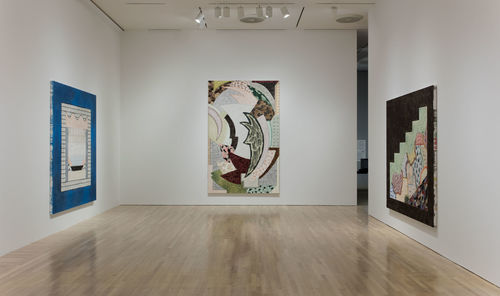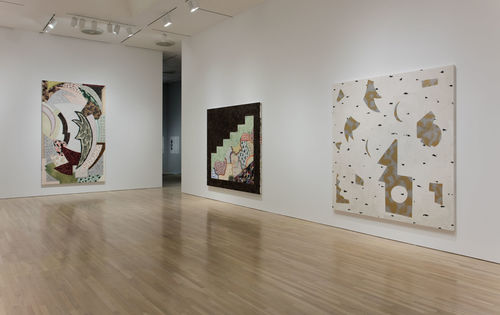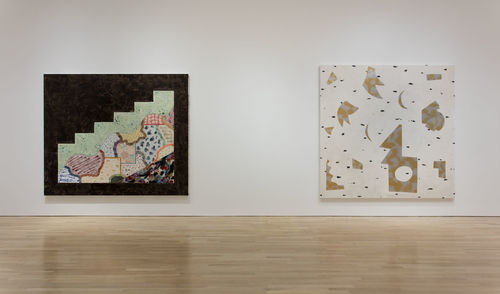
Rebecca Morris
Rebecca Morris’s paintings are rooted in the discipline’s most elementary characteristics, namely the interplay of shape and color. As painting evolved, recourse to its fundamental properties led to the advent of an abstraction that aspired to the singular characteristics of the monochrome. The history of abstraction is therefore one of reduction and reducibility, as painting, over the course of the last century, became increasingly flat and emptied of visible content. Judging from Morris’s paintings, however, nothing could be further from the truth. Rather than propel this narrative forward, she subscribes to an abstraction that is about possibilities. Not altogether immune from abstraction’s reductionist tenets, she has translated them into an elegant transparency of means the base of which is the mark—be it a stroke, drip, stain, splotch, or spatter. This lexicon is overlaid atop a personalized language of shapes such as recurring staircase forms and claws.
In her recent works Morris has taken to repeating a given painterly gesture to create patterns. These patterns fill areas of irregular geometric shapes that are then corralled into compositions. A species of geometric abstraction, the paintings are built around the principle of collage as odd shapes of discordant pattern are juxtaposed in a manner that produces a sense of deep space that quickly collapses. Opposing areas of paint are applied to this end—framed and bordered, layered and overlaid in such a way that the paintings are caught in a structural paradox between flatness and dimensionality. Neither ironic nor mournful, Morris’s works partake of the often forgotten ebullience of abstraction’s earliest moments.












